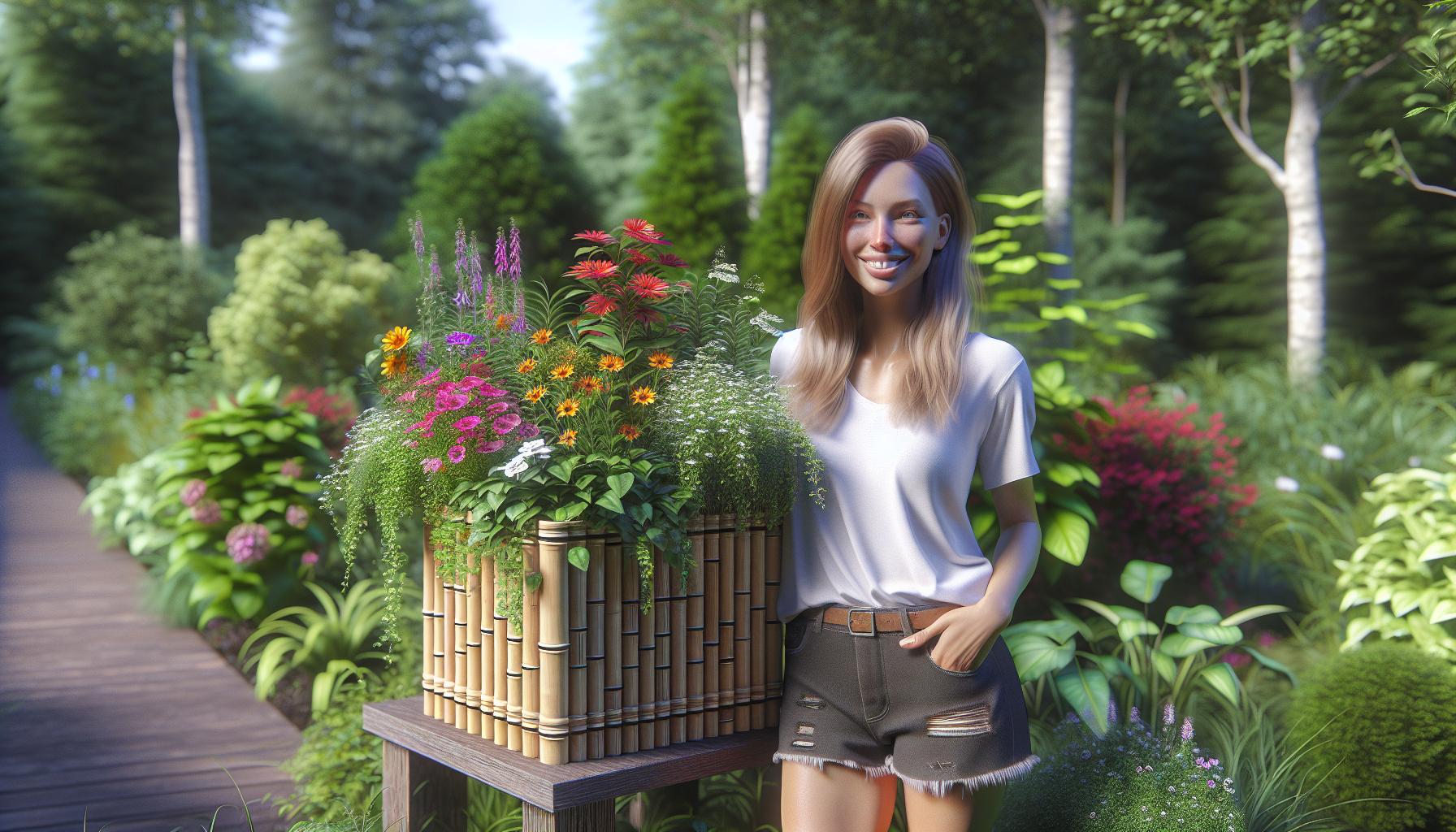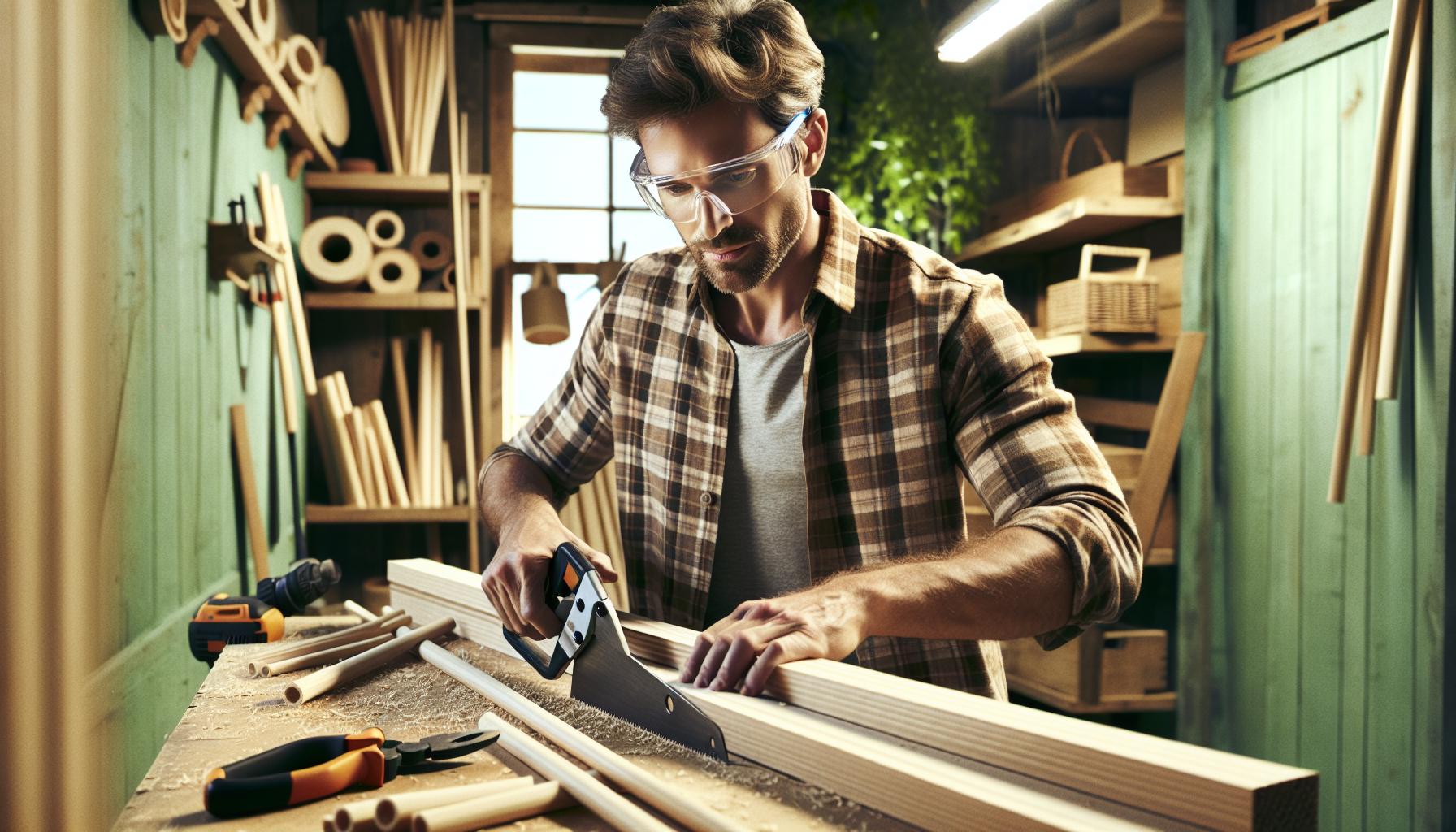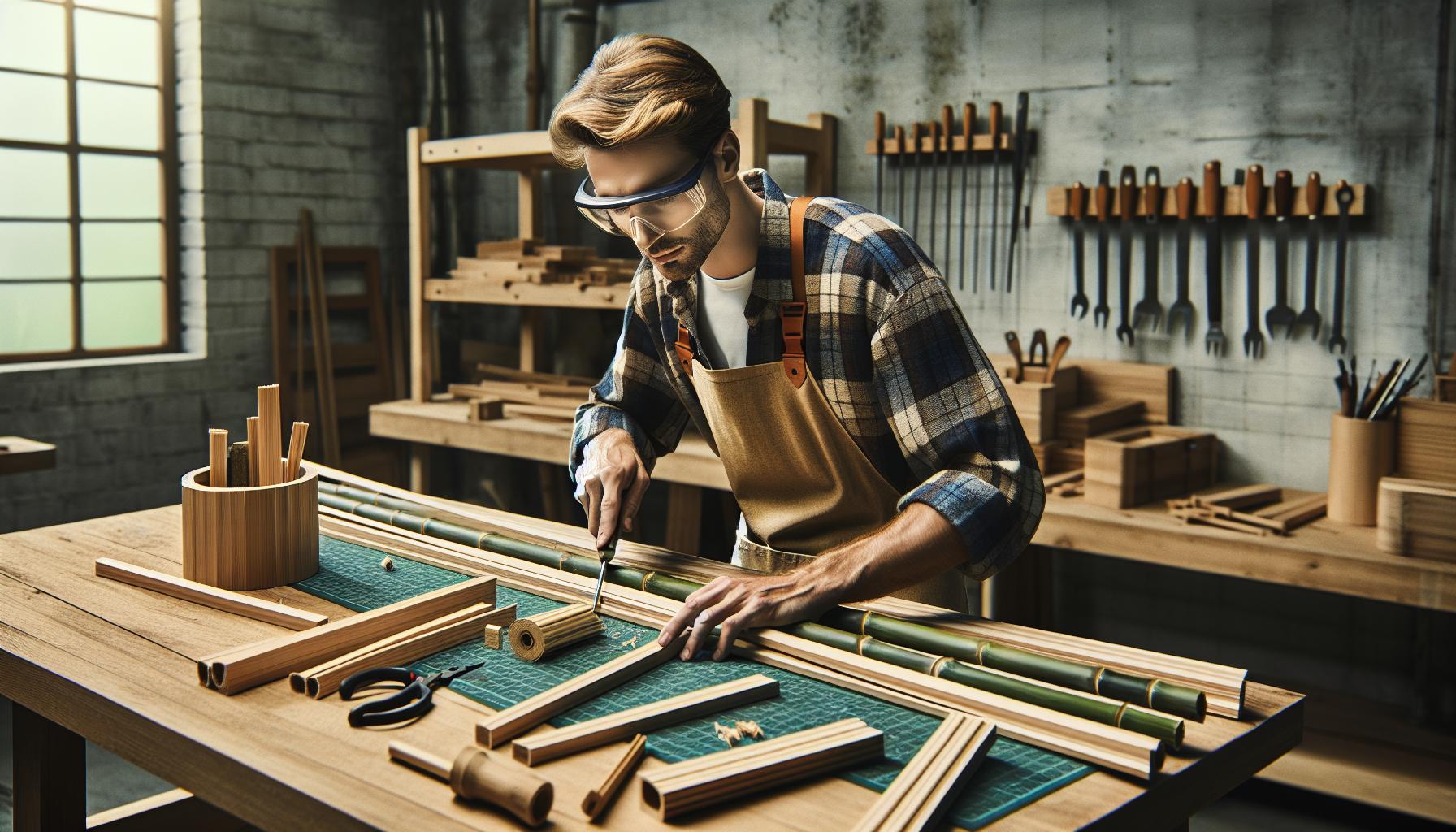Bamboo’s not just for pandas anymore. This versatile, sustainable material’s making waves in the DIY world, offering endless possibilities for creative projects. Whether you’re a seasoned DIY enthusiast or just dipping your toes into crafting, bamboo’s natural beauty and strength make it an ideal choice for a variety of projects.
I’ve always been fascinated by bamboo’s ability to transform ordinary spaces into something extraordinary. From simple home decor to intricate furniture pieces, bamboo’s flexibility and eco-friendliness are hard to beat. Plus, working with bamboo lets you bring a touch of nature into your home, creating a calming and stylish environment.
Key Takeaways
- Sustainable Material: Bamboo is a renewable, eco-friendly resource that grows quickly and requires minimal pesticides, making it ideal for eco-conscious DIY projects.
- Versatility and Strength: Its impressive strength-to-weight ratio and natural flexibility allow bamboo to be used in a wide range of projects, from furniture to decorative pieces.
- DIY Project Ideas: Popular bamboo projects include bamboo furniture, home decor items like wall art and wind chimes, and garden accessories such as trellises and planter boxes.
- Necessary Tools and Materials: Successful bamboo crafting involves essential tools like saws, drills, and sanders, along with materials like bamboo poles, adhesive, and protective sealant.
- Creative Crafting Tips: Selecting mature bamboo, preparing it with care, and using proper safety measures ensure both the durability and aesthetic appeal of bamboo DIY projects.
Bamboo DIY Projects

Bamboo offers unique properties that make it ideal for DIY projects. As a fast-growing grass, it regenerates quickly after harvest, ensuring sustainability. Its strength-to-weight ratio is impressive, similar to steel, making it both sturdy and lightweight. This makes bamboo perfect for creating furniture and other structural items.
The material’s natural flexibility allows it to bend without breaking, a valuable trait when crafting intricate designs. Bamboo resists pests and requires minimal pesticides during growth, adding to its eco-friendly reputation. Its smooth texture and attractive grain patterns enhance aesthetic appeal, suiting decorative projects like wall art.
Bamboo’s availability worldwide supports various DIY enthusiasts in accessing it easily. It comes in multiple sizes, from slender sticks to thick poles, allowing for diverse applications. With its hypoallergenic qualities, bamboo becomes a safe choice for projects in homes with allergy-prone individuals.
In my experience, using bamboo means embracing a renewable resource with countless possibilities. Whether creating a stylish lamp or building an outdoor pergola, bamboo’s versatility becomes an integral component of successful DIY projects.
Popular Bamboo DIY Projects
Bamboo’s flexibility and strength make it an ideal choice for various DIY projects. Here, I explore some popular uses of this versatile material.
Bamboo Furniture
Crafting furniture from bamboo combines sustainability with style. I find making chairs and tables rewarding, thanks to bamboo’s strength-to-weight ratio. Its lightness makes it manageable for DIY enthusiasts. Bamboo shelves add an elegant touch to any room, offering both functionality and beauty. With its natural resilience, bamboo furniture complements both indoor and outdoor settings.
Bamboo Decor
Bamboo’s aesthetic charm enhances home decor. I enjoy creating wall art and picture frames from bamboo, noting its smooth texture and attractive grain. Bamboo wind chimes provide melodic ambiance while showcasing artistic flair. As a DIY project, bamboo vases highlight this material’s ability to complement various interior themes. This offers an eco-friendly decor option that doesn’t sacrifice style on the altar of sustainability.
Bamboo Garden Accessories
In gardens, bamboo delivers both utility and visual appeal. Building bamboo trellises supports climbing plants using sturdy, sustainable material. My projects often include bamboo planter boxes, which blend well with outdoor spaces. Adding bamboo water features like fountains creates soothing sounds in the garden, contributing to a serene environment. These accessories leverage bamboo’s weather resistance, ensuring longevity.
Bamboo’s diverse uses and environmental benefits make it a favored material among DIY enthusiasts looking to combine creativity with sustainability.
Tools and Materials Needed for Bamboo Projects
Bamboo projects require specific tools and materials tailored to the unique properties of bamboo. Understanding these essentials aids in crafting durable and attractive items efficiently.
Essential Tools

- Saw: A fine-toothed saw cuts bamboo cleanly without splintering.
- Drill: A cordless drill with various bits allows precise hole placement.
- Measuring Tape: Accurate measurements ensure project precision.
- Sanding Block: Sanding blocks smooth the bamboo surface post-cutting.
- Knife: A sharp utility knife trims and shapes bamboo with precision.
- Clamps: Clamps secure bamboo pieces during assembly and gluing.
- Bamboo Poles: Different pole sizes cater to diverse DIY projects.
- Adhesive: Strong wood glue ensures solid joints and connections.
- Varnish or Sealant: Protects bamboo from moisture and enhances durability.
- Rope or Cord: Natural fibers like sisal or hemp complement bamboo aesthetics.
- Hardware: Screws, nails, and brackets reinforce structures where needed.
Equipped with the right tools and materials, crafting bamboo projects becomes a straightforward and rewarding process. Their sustainable nature makes these creations a mindful choice for any DIY enthusiast.
Step-by-Step Guide to Creating a Bamboo Project

Creating a bamboo project combines creativity with functionality. Follow these detailed steps to ensure success and enjoy the process.
Choosing appropriate bamboo is crucial. Select bamboo that suits the project’s size, style, and strength requirements. For smaller projects like frames or wind chimes, thinner poles work well. For larger structures like furniture, opt for thicker, sturdier poles. Ensure the bamboo is mature, as immature bamboo lacks durability and has a higher moisture content.
Preparing Bamboo for Use
Proper preparation enhances durability. First, clean the bamboo to remove any dirt or debris. Then, dry the bamboo completely to prevent warping or cracking. Use a fine-toothed saw to cut the bamboo to the desired size; for intricate designs, precision is key. Sand the cut edges to prevent splinters and ensure a smooth finish.
Assembly and Finishing Steps
Begin assembly using strong adhesive or fastening hardware. Position bamboo pieces carefully, using clamps to hold them in place while glue cures. For added stability, consider reinforcing connections with natural rope or cord. Once assembled, apply varnish or sealant to protect the bamboo from moisture and enhance its natural beauty. Lastly, inspect the finished project to ensure all parts are secure and the surface is smooth.
Tips for Success in Bamboo DIY Projects
Bamboo projects not only require creativity but also attention to detail. With the right techniques, these projects can be both durable and visually appealing.
Safety Considerations
Personal safety is crucial when working with bamboo. I always wear gloves to protect my hands from sharp edges and potential splinters. Safety glasses are essential to shield my eyes during cutting and sanding processes. I ensure proper ventilation by working in an open space, especially when using adhesives or sealants, to avoid inhaling harmful fumes. Properly securing bamboo with clamps before drilling or sawing enhances both safety and accuracy.
Enhancing Durability and Aesthetics
Enhancing bamboo’s durability begins with selecting high-quality pieces free from cracks or blemishes. After cutting, I sand the edges to prevent splinters and allow for a smooth finish. Applying a good-quality sealant protects the bamboo from moisture and pests, extending the life of my projects. To elevate aesthetics, I often use natural finishes that highlight the bamboo’s grain patterns, creating a polished and elegant look. Adding decorative elements like cords or carvings personalizes the project, combining functionality with style.
Bamboo’s versatility and sustainability make it a standout choice for DIY projects. Its unique properties allow for creative expression while promoting eco-friendly practices. From furniture to decor, bamboo’s strength and aesthetic appeal enhance any space. With the right tools and techniques, crafting with bamboo becomes an enjoyable and fulfilling experience. Embracing bamboo in DIY projects not only supports environmental responsibility but also brings a touch of natural beauty and innovation into our homes.



